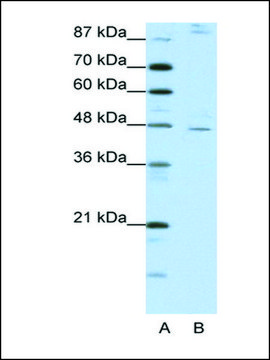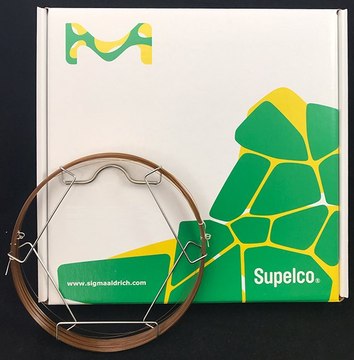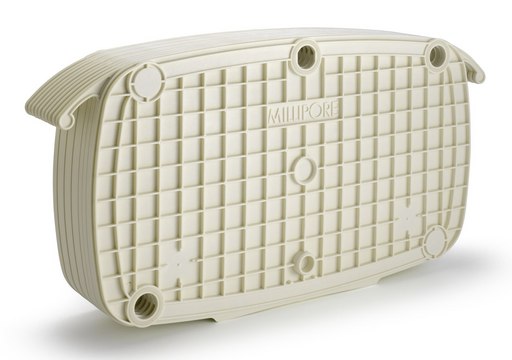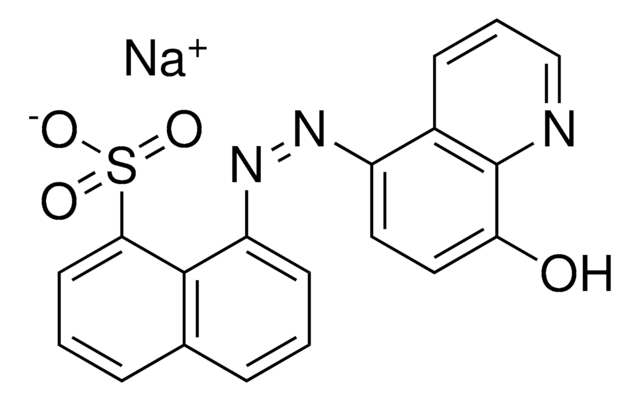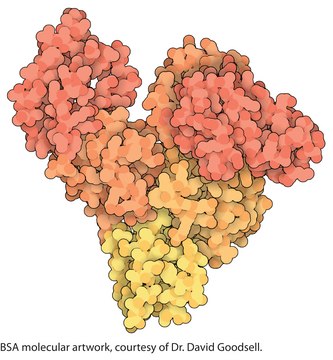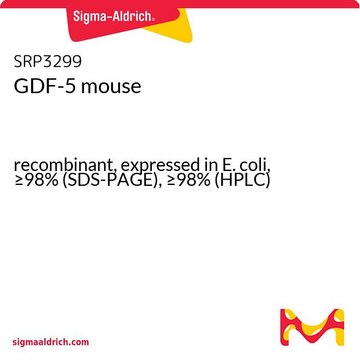推荐产品
生物来源
human
重组
expressed in E. coli
方案
≥98% (HPLC)
≥98% (SDS-PAGE)
表单
lyophilized
效能
0.5-4 μg ED50
分子量
~27 kDa
包装
pkg of 50 μg
储存条件
avoid repeated freeze/thaw cycles
杂质
endotoxin, tested
NCBI登记号
UniProt登记号
运输
wet ice
储存温度
−20°C
基因信息
human ... GDF5(8200)
相关类别
一般描述
The gene BMP-14 (bone morphogenetic protein 14) is mapped to human chromosome 20q11.22. It belongs to the bone morphogenetic protein family. Recombinant human BMP-14 is a 27kDa homodimeric protein consisting of two 120 amino acid polypeptide chains.
生化/生理作用
BMP-14 (bone morphogenetic protein 14) is involved in enhancing proliferations of osteoblasts, periosteum cells and connective tissue fibroblasts. It also promotes endochondral bone growth, proper development of limb skeletons and joints, and odontogenesis. It interacts with BMP type II receptor (BMPR-II) and might be involved in bone morphogenesis. Mutations in the BMP-14 gene are associated with brachydactyly type C, intervertebral disc degeneration, acromesomelic dysplasia Grebe type and osteoarthritis.
外形
Lyophilized from 10 mM Sodium Citrate, pH 3.5.
重悬
Centrifuge the vial prior to opening. Avoid freeze-thaw cycles.
Reconstitute to a concentration of 0.1-1.0 mg/mL in water containing BSA (50 mg BSA per 1 mg of protein). This solution can then be diluted into other aqueous buffers.
储存分类代码
11 - Combustible Solids
WGK
WGK 3
闪点(°F)
Not applicable
闪点(°C)
Not applicable
法规信息
新产品
历史批次信息供参考:
分析证书(COA)
Lot/Batch Number
Role of growth differentiation factor-5 and bone morphogenetic protein type II receptor in the development of lumbar intervertebral disc degeneration.
Li YF, et al.
International Journal of Clinical and Experimental Pathology, 8, 719-719 (2015)
A comprehensive meta-analysis of association between genetic variants of GDF5 and osteoarthritis of the knee, hip and hand.
Zhang R, et al.
Inflammation Research, 64, 405-405 (2015)
Two novel homozygous missense mutations in the GDF5 gene cause brachydactyly type C.
Al-Qattan MM, et al.
American Journal of Medical Genetics, 167, 1621-1621 (2015)
Novel homozygous sequence variants in the GDF5 gene underlie acromesomelic dysplasia type-grebe in consanguineous families.
Umair M, et al.
Congenital Anomalies, 57, 45-45 (2017)
Dan Wang et al.
Experimental and therapeutic medicine, 16(2), 1165-1174 (2018-08-18)
Bone marrow mesenchymal stem cells (BMSCs) are pluripotent cells, which have the capacity to differentiate into various types of mesenchymal cell phenotypes, including osteoblasts, chondroblasts, myoblasts and tendon fibroblasts (TFs). The molecular mechanism for tenogenic differentiation of BMSCs is still
我们的科学家团队拥有各种研究领域经验,包括生命科学、材料科学、化学合成、色谱、分析及许多其他领域.
联系技术服务部门